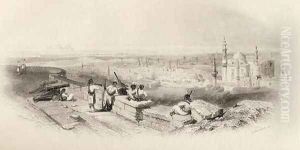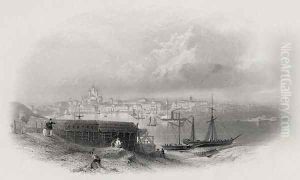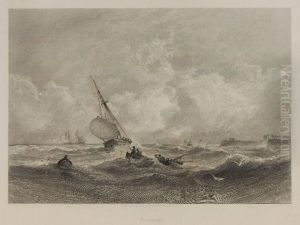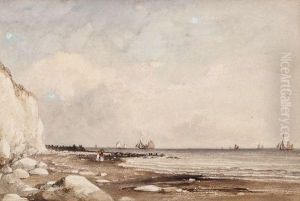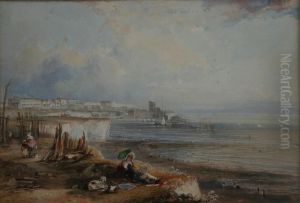Edward Paxman Brandard Paintings
Edward Paxman Brandard was a notable English engraver, born in 1819, who made significant contributions to the world of art during the 19th century. His career was marked by a prolific output and a dedication to the craft of engraving, which was a vital medium for reproducing and disseminating artworks before the advent of photographic processes. Brandard's work encompasses a wide range of subjects, including landscapes, portraits, and illustrations for books and periodicals, reflecting the Victorian era's diverse interests and its appetite for visual culture.
Edward Paxman Brandard was trained in the art of engraving from a young age, developing his skills under the guidance of established artists and engravers of the time. He quickly gained a reputation for his meticulous attention to detail and his ability to capture the essence of a painting or drawing in his engravings. Throughout his career, Brandard worked with many of the leading artists of his day, translating their works into engravings that could be enjoyed by a wider audience. His engravings were often featured in prominent publications, including illustrated books and the popular art journals of the period, which played a crucial role in the dissemination of art in Victorian society.
In addition to his work as an engraver, Brandard was involved in the artistic community of his time, contributing to the development of engraving as a respected art form. He was known for his efforts to push the boundaries of the engraving medium, experimenting with techniques and materials to achieve greater depth and realism in his work. Despite the challenges posed by the rise of photography and changes in artistic tastes towards the end of the 19th century, Brandard continued to produce high-quality engravings that were appreciated by collectors and art aficionados.
Edward Paxman Brandard passed away in 1898, leaving behind a legacy that has continued to be recognized for its contribution to the art of engraving. His works are held in various collections and museums, where they serve as a testament to the skill and artistry of engravers in the Victorian era. Brandard's dedication to his craft and his role in promoting engraving as a legitimate and valuable form of art have ensured his place in the annals of art history.
